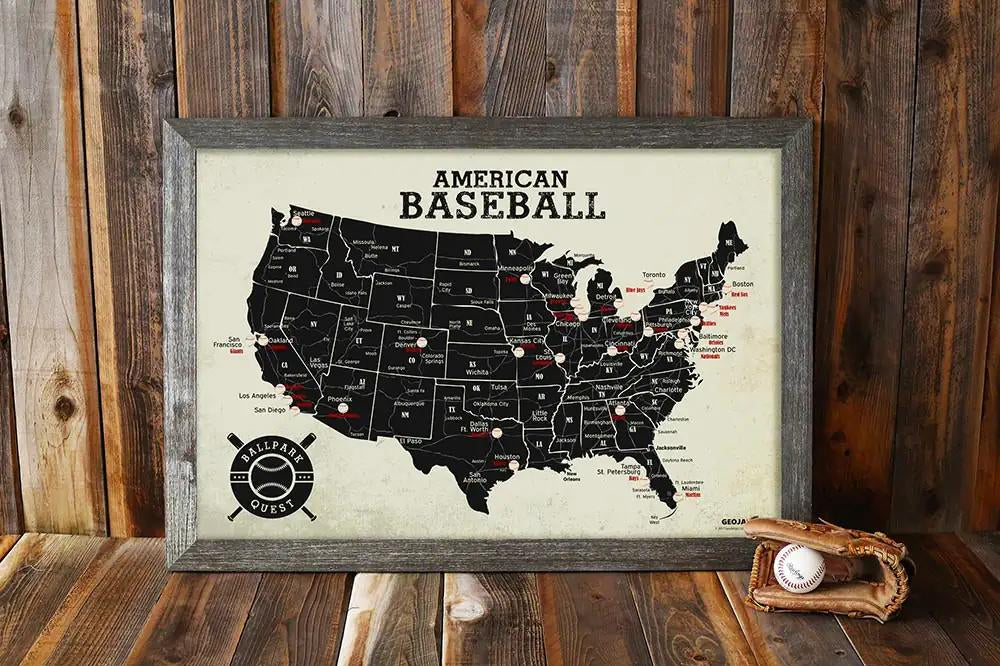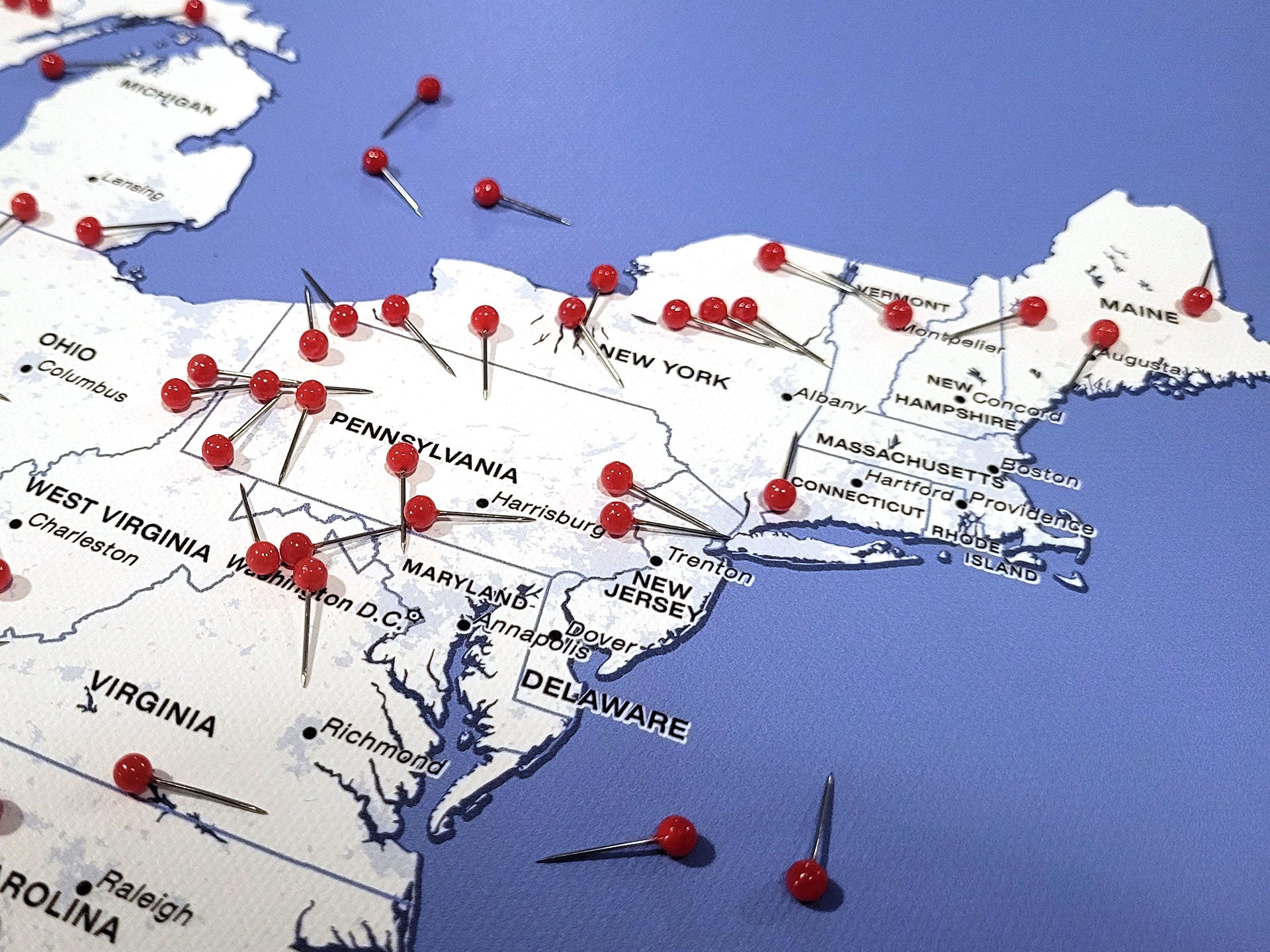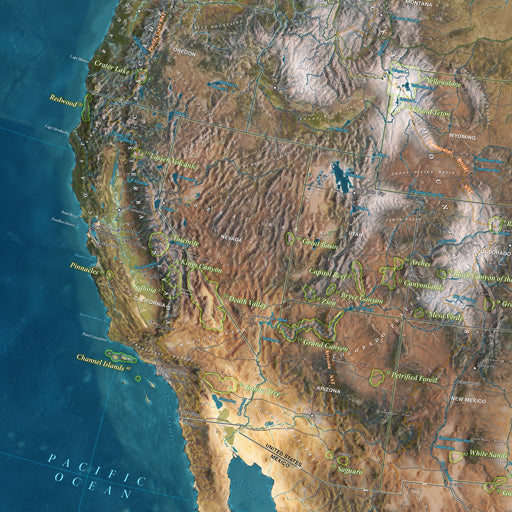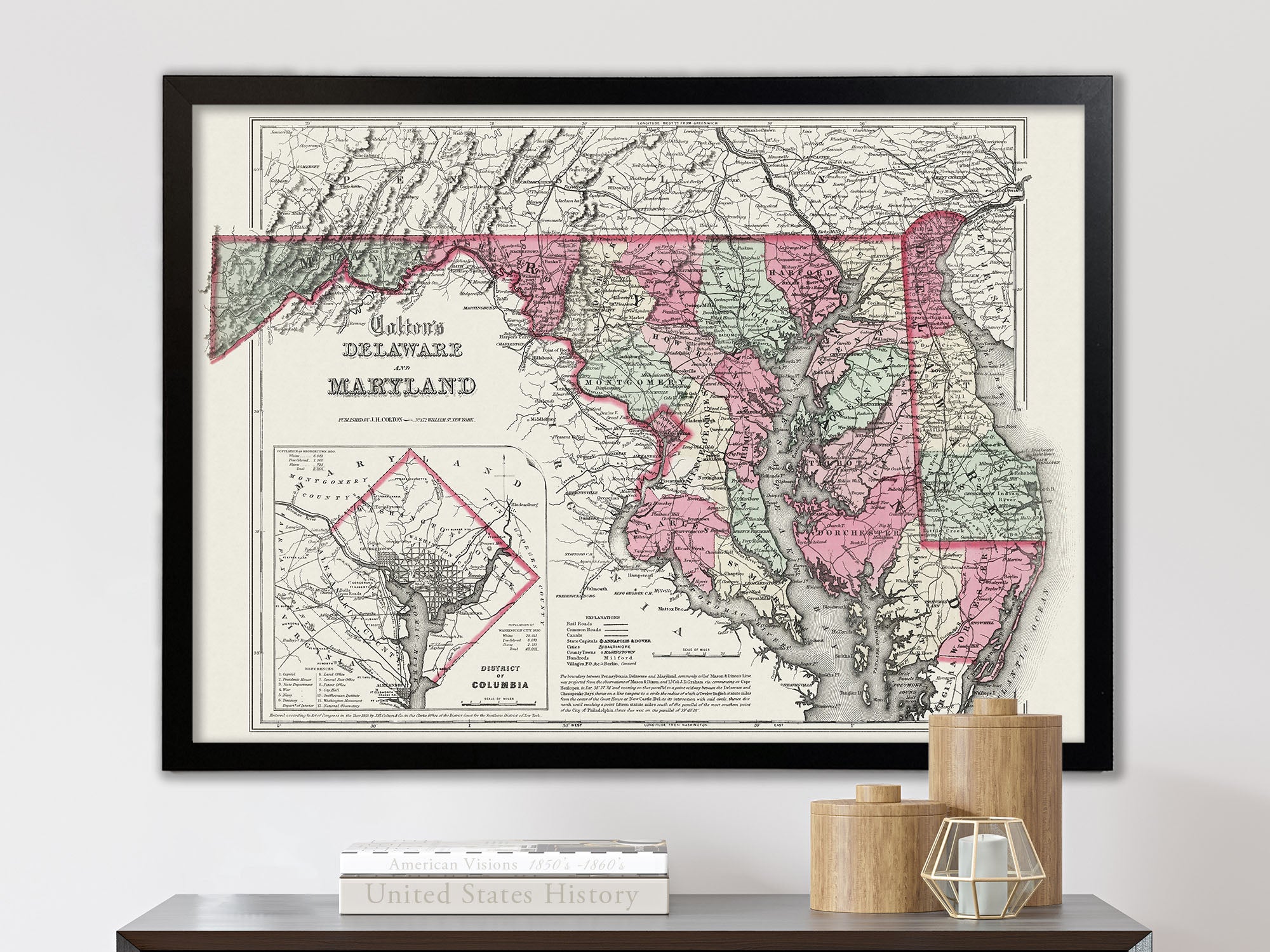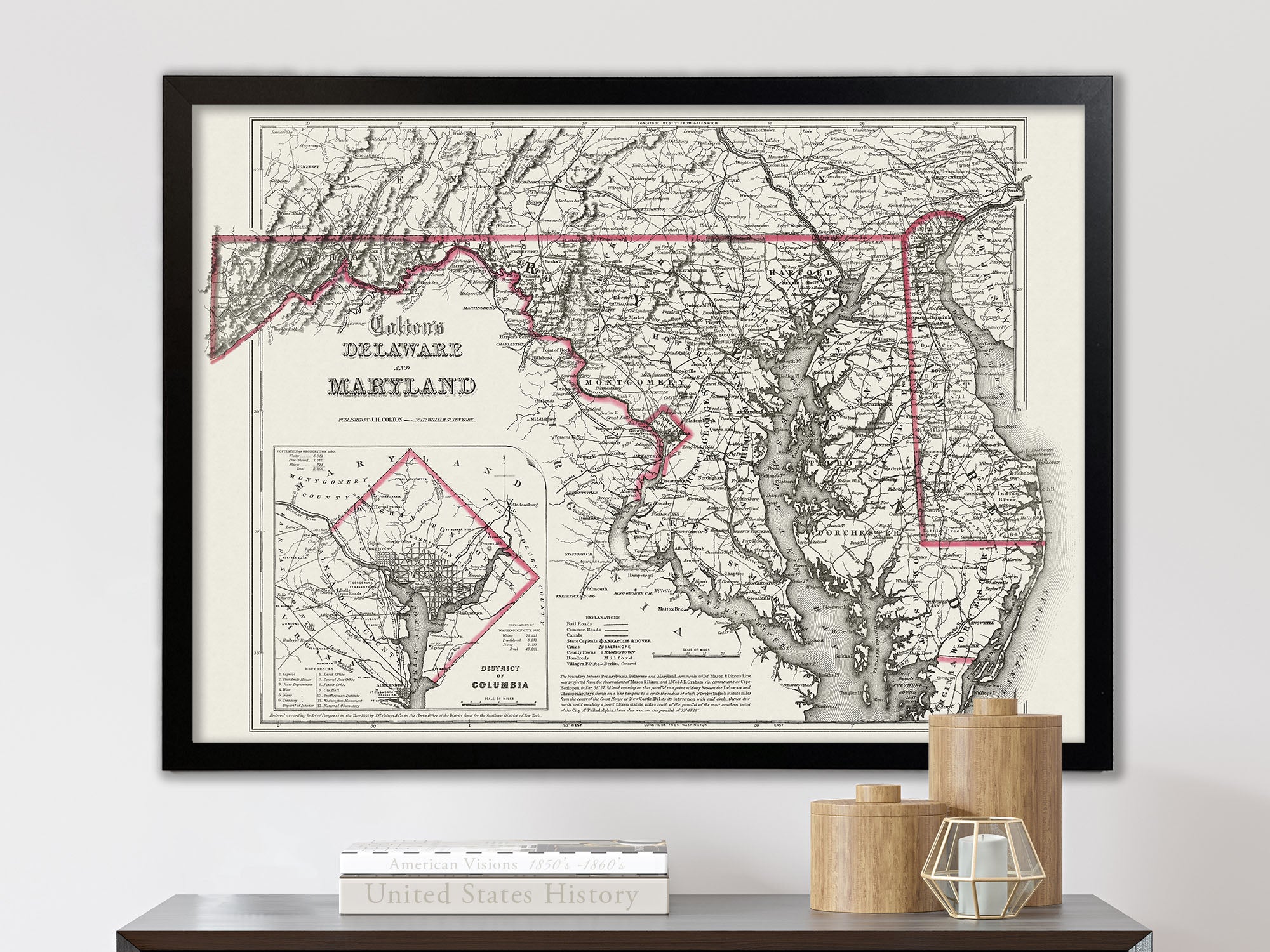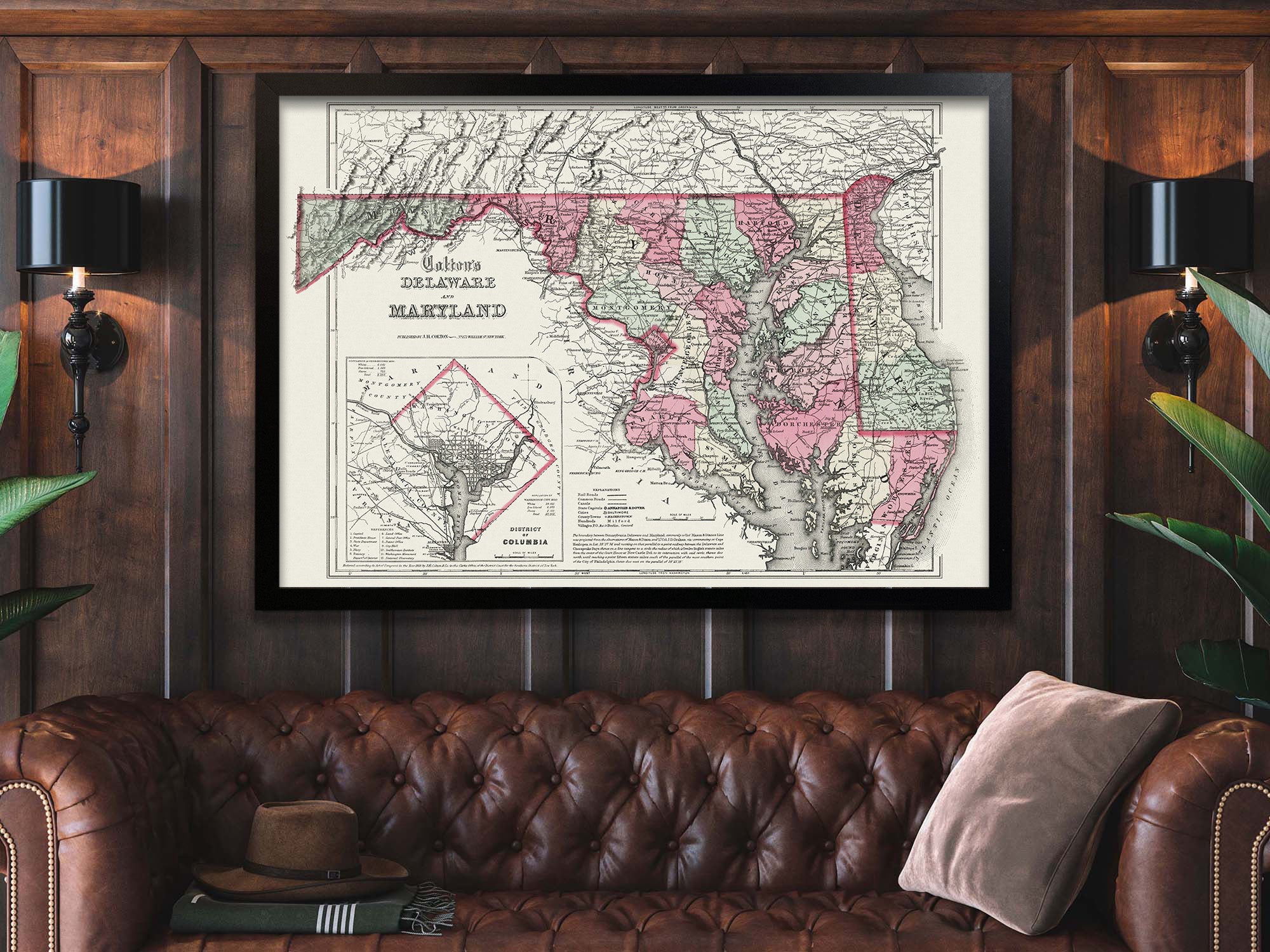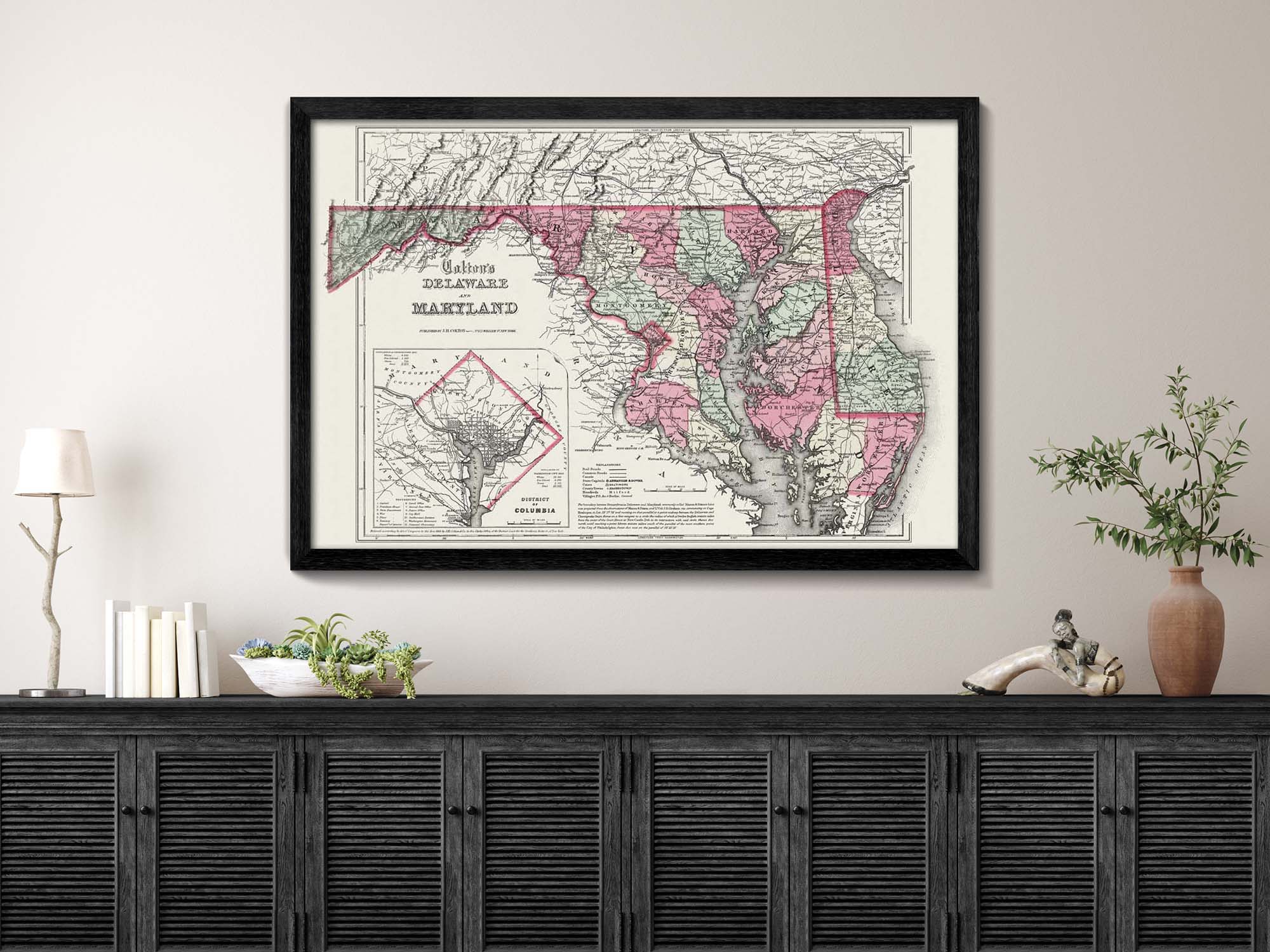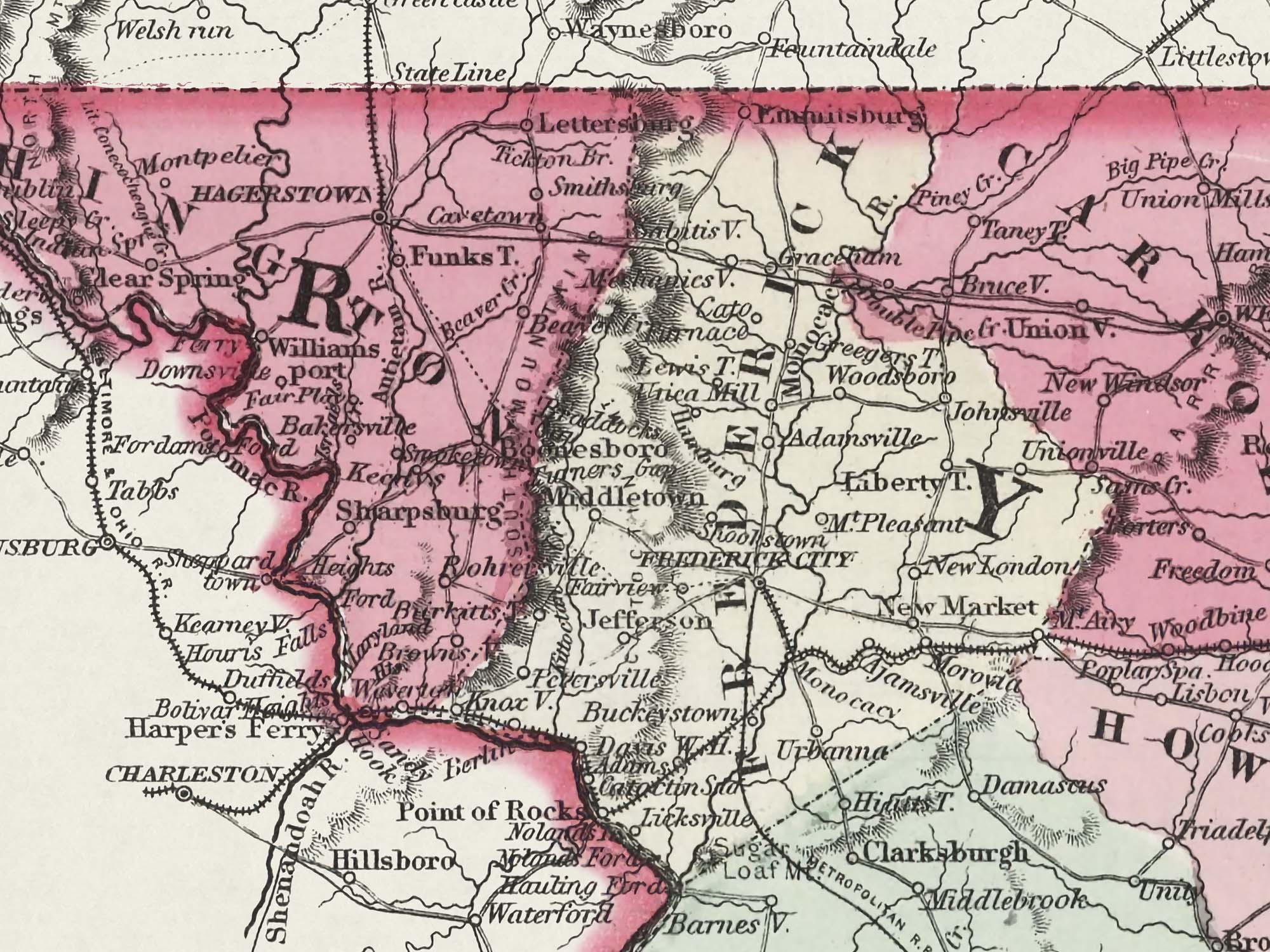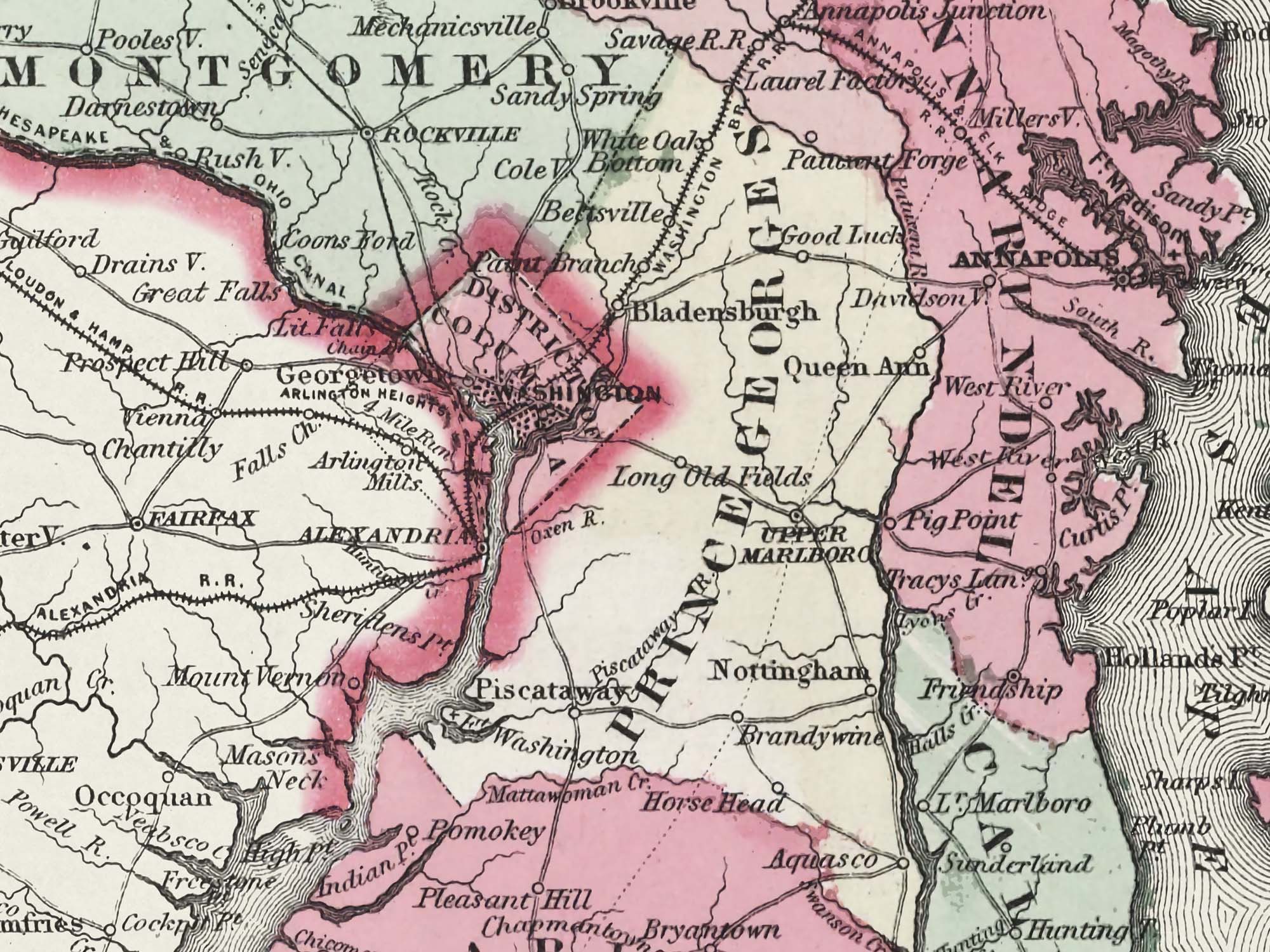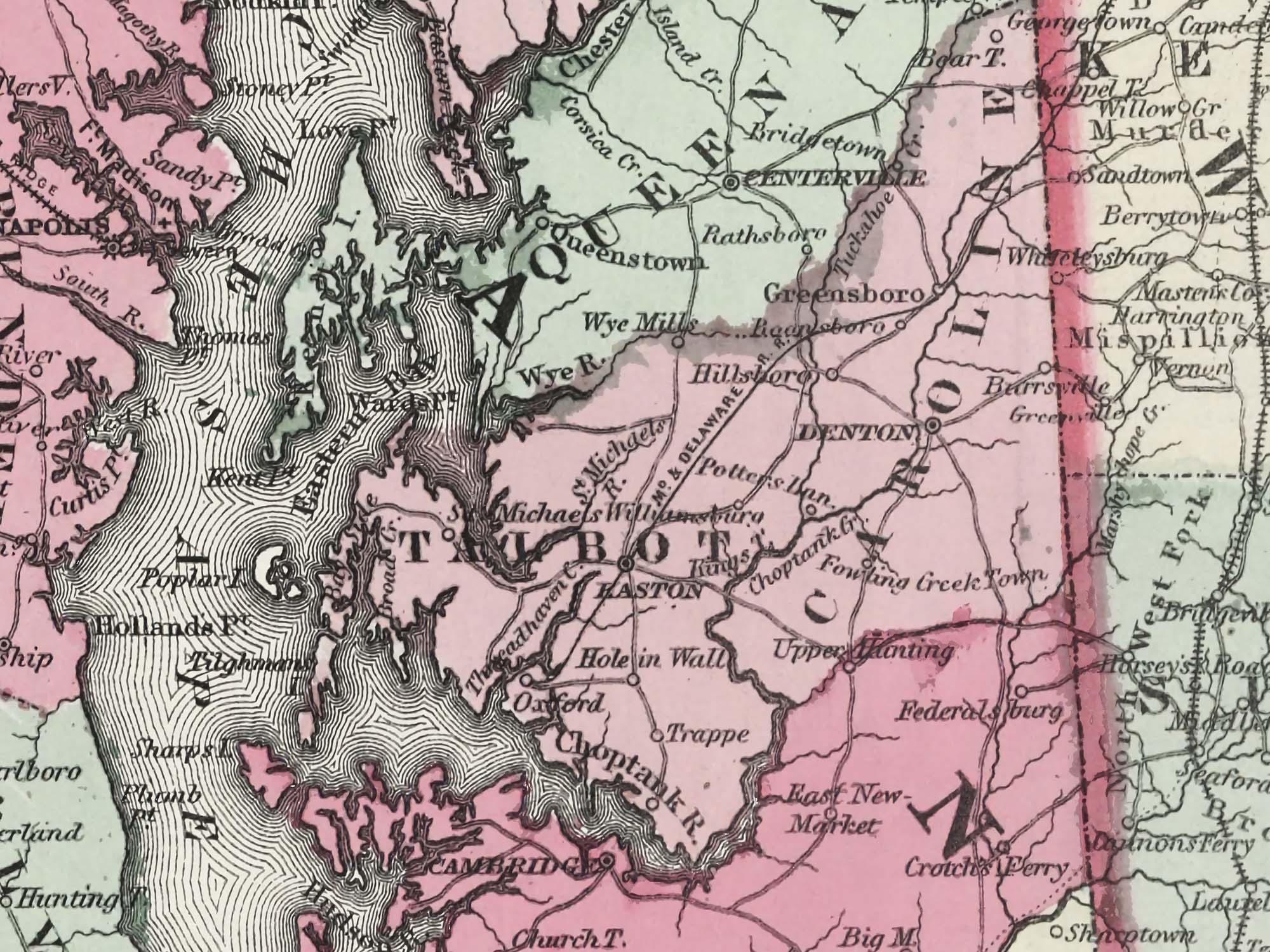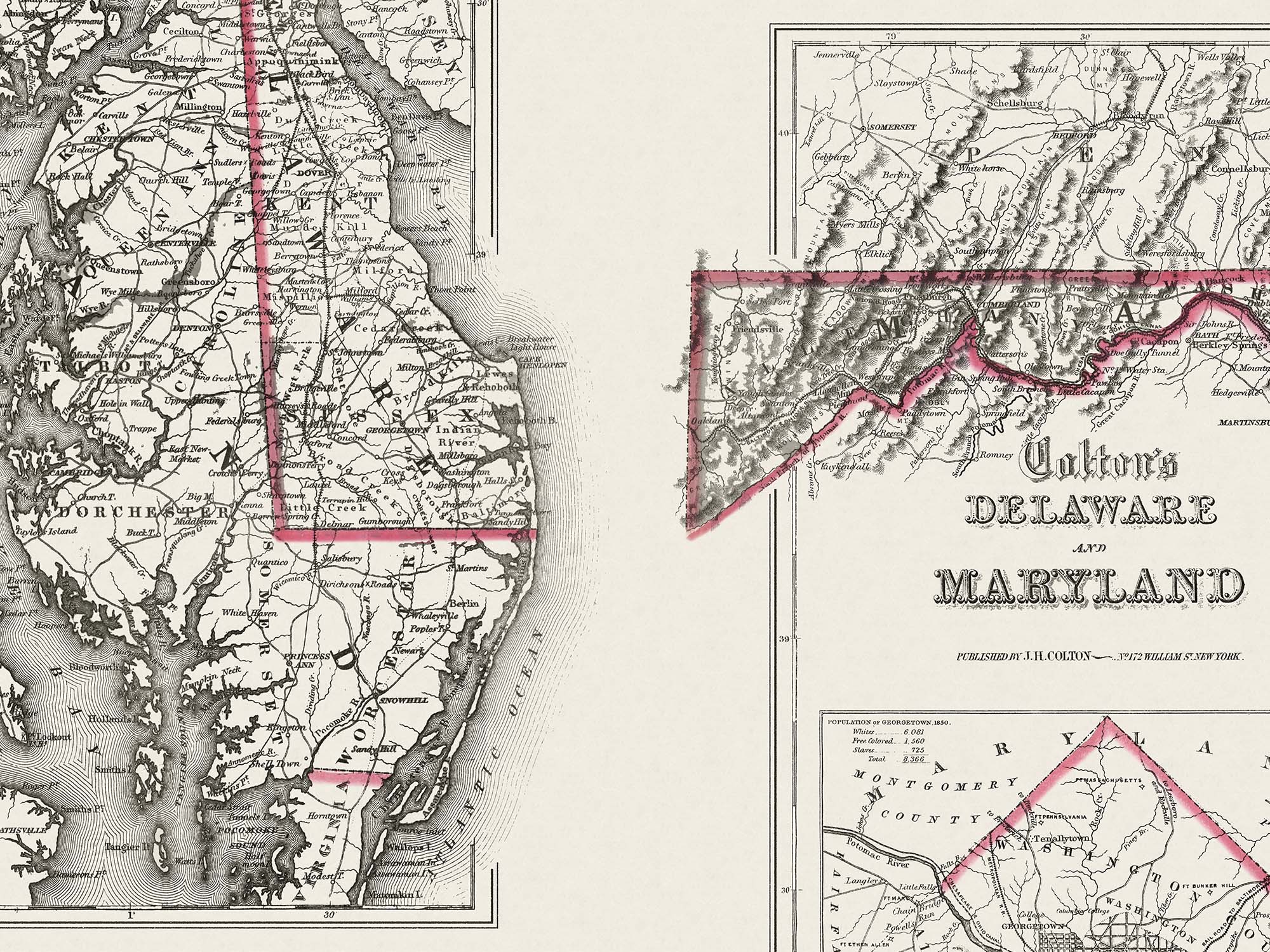This map is a faithful reproduction of the original 1850 map restored to its former glory using the latest digital imaging technology.
Antique State Map of Delaware and Maryland
Standard maps will enter production right away, within the next business day. Larger orders may take more time.
All push pin board maps (framed or canvas wrap) include push pins, are easy to hang, and ship free in the continental US. We'll select the optimal shipping method for fast delivery.
For personalized maps we collaborate closely to guarantee satisfaction. Expect a proof to be sent to you. Your swift responses will facilitate the production and shipping process.
If there are any problems with your map we will take care of you. Returns for all maps are straightforward and hassle-free.
For personalized maps, engaging with the email proofs we send ensures that the final product meets your expectations precisely.
We have 30+ years of cartography experience, meticulously craft each order by hand to ensure excellence, and 100% guarantee your satisfaction. We produce maps that are built to last, with state of the art production and archival quality materials.
Customize with quotes, legends, or dedications using "Personalize Map" options to craft your masterpiece map. Or reach out to us if you don't see the option you want.
We collaborate with you from design to approval of your proof so that you are 100% happy before we print and ship.
Our excellent customer service is always open to you.
Restored 1850's Map
Fine Art Quality
Impressively produced with Archival Inks, Rich Color Depth, and clear and vivid labels. We use premium matte paper.
Expert Craftsmanship
We prepare the map using Fine Art Giclee production techniques. We roll the map in a sturdy tube for shipping to provide a crease-less piece of art.
Vintage State Map of Delaware and Maryland
- Description
- Specs & Construction
About the Map: Explore the geographic history of the state of Delaware and Maryland in this historic map. This map is part of our vintage USA State Map Collection showing the geography of the states in the 1850-1860s and the time of the Civil War.
Restoration: The map is a reproduction of the original map meticulously restored to its former glory using the latest digital imaging technology. Using this technology, we carefully restored the colors, torn edges, creases, smeared writings and more. We enhanced features while keeping the original character and design of the map.
Geographic Details: This historic map shows many details of towns, roads, railroads, and waterways in the 19th century of the United States.
Shows historic cities such as Wilmington, Baltimore, Columbia and more!
Explore the historic boundaries of the cities, counties, and states that have changed over the years. Discover physical changes in the geography - such as former lakes and canals used for transportation and agriculture.
This map is unframed, sold as an art print. Frames are shown for illustration ONLY.
Available Sizes: For an impressive display and maximum readability, choose the largest size available.
Smaller size prints make excellent wall art in groups. Please note that there is no guarantee that small text will be legible in print.
Great Gift For: Interior Designers, Teachers, History Buffs, Anniversaries, Birthdays, Friends, Family, and many more!
Production and Shipping Times: The amount of time it takes for your map to arrive depends on where you live and how fast you approve the proof if you’ve ordered a custom map. See Production & Shipping.
Quality and Guarantee: We stand behind our work and guarantee the construction and quality. Contact us if you have any problems with your map and we will coordinate to ensure you are very happy with your purchase.
Materials and Production: This reproduction is printed on Fine Art Museum Quality Paper with giclée inks. The thick paper is archival quality and acid-free with vivid color definition. Paper details:
- 10 mil thick
- 230 gsm weight
- Museum Quality Matte finish
Made in the USA by a USA Small Business and Professional Geographer & Cartographer.
Shipped in a tube and rolled to eliminate creases.
Why choose GeoJango Maps
- We have a lifelong passion for maps, backed by 30+ years of cartography experience and Master's Degrees in Geographic Information Systems (GIS) from Penn State University and Environmental Science from the University of South Florida.
- Our incredible investment into the design of our maps results in unparalleled detail that matters: they will educate you, and grow with you as you travel the world and track your travels—where other maps miss the mark.
- We’ve built the leading map production studio in the USA and use exclusively USA-made materials. Each pin map is proudly crafted by hand, printed by us on the finest materials, mounted on museum-quality Gatorfoam, and carefully framed just for you.
History of the Time
The 1850s were a pivotal period in the histories of Delaware and Maryland, two neighboring states with unique circumstances that reflected the complexities of the pre-Civil War United States. While sharing similarities in economic activities and political debates, each state also had distinct characteristics that shaped their paths during this transformative decade.
Delaware, known as "The First State" due to being the first to ratify the United States Constitution, faced a range of challenges and changes during the 1850s. Economically, the state had a strong agricultural base, with a focus on crops like grains and fruits. The state's proximity to major cities along the Eastern Seaboard facilitated trade and commerce, contributing to its economic growth.
During the 1850s, Delaware experienced political divisions over the issue of slavery. While the state had a relatively small enslaved population compared to some southern states, slavery was still deeply ingrained in its society. The Compromise of 1850 and the Fugitive Slave Act intensified the debates surrounding slavery's expansion, with some Delawareans supporting these measures and others opposing them.
Maryland, another state with a diverse economy and population, grappled with similar tensions during the 1850s. Its economy was a mix of agriculture and industry, with tobacco and wheat being major crops. Baltimore, the state's largest city, played a vital role in trade and transportation, given its access to the Chesapeake Bay and proximity to major markets.
Like Delaware, Maryland was divided over the issue of slavery. The state's proximity to the nation's capital, Washington, D.C., placed it at the center of political discussions and debates. The presence of both slaveholders and abolitionists within the state contributed to a complex social and political landscape.
The 1850s saw both Delaware and Maryland navigating the political currents of the era, including the rise of the Republican Party. While these states were not as firmly entrenched in the pro-slavery stance as some southern states, the debates over slavery's expansion and the tensions between North and South were still palpable.
The Underground Railroad, a network of safe houses and secret routes used to help enslaved individuals escape to freedom, was active in both Delaware and Maryland. While the states had differing levels of support for abolitionist efforts, the presence of the Underground Railroad underscores the desire for freedom and the resistance to the institution of slavery.
The economic and political changes of the 1850s also brought about shifts in society and culture. The emergence of women's rights movements and the call for suffrage began to gain momentum. Figures like Harriet Tubman, a Maryland native who escaped slavery and became a prominent abolitionist and Underground Railroad conductor, left an indelible mark on history.
As the 1850s drew to a close, both Delaware and Maryland found themselves on the brink of profound change. The events of the next decade, including the outbreak of the Civil War, would test the resolve and convictions of these states. The debates over slavery, the shifts in economy and society, and the ongoing political divisions laid the groundwork for their roles in the larger national narrative.


